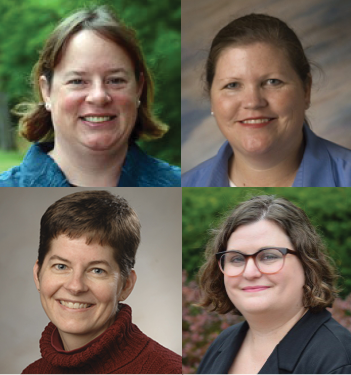Corey Drake (Professor & Director of Teacher Preparation Programs, Michigan State University), Jill Newton (Associate Professor of Mathematics Education, Purdue University), Amy Olson (Associate Professor, Duquesne University), Marcy Wood (Associate Professor of Mathematics Education & Department Head for Teaching, Learning, and Sociocultural Studies, University of Arizona)

One important aspect of any mathematics curriculum is its coherence, or connections, across lessons. This coherence links lessons and activities so that mathematical ideas, representations, practices, skills, instructional strategies, and ways of thinking build upon each other to help students construct mathematical meaning. When teachers rely predominantly on published curriculum materials, curricular coherence is implied or made explicit by the curriculum authors. However, many of today's teachers are no longer given a foundational textbook or single set of resources. Further, teachers have unprecedented access via the internet and social media to lessons and activities produced by many different curriculum developers (including other teachers). As a result, the important task of building curricular coherence becomes the responsibility of the classroom teacher. And yet, we know very little about how teachers think about curricular coherence or how their decisions about lessons and activities reflect the coherent mathematical story they hope students will learn in their classrooms.
When writing our grant proposal, we realized that curricular coherence could mean many different things. For example, the National Council of Teachers of Mathematics (NCTM, 2016) described a coherent curriculum as one in which “connections are made from one year to the next, from one idea to another, from one representation to another…There is coherence pedagogically, logically, conceptually, in terms of learning science and with the real world” (p. 1). This suggested that coherence meant connections not only across mathematical topics, but also across mathematical practices, representations, and strategies.
Coherence also seems to be tightly tied to Mathematical Knowledge for Teaching (MKT; Ball, Thames, & Phelps, 2008); in particular, the Horizon Content Knowledge domain (subject matter knowledge) described as “an awareness of how mathematical topics are related over the span of mathematics included in the curriculum” (p. 403) and the Knowledge of Content and Curriculum domain (pedagogical content knowledge) that highlights horizontal and vertical curriculum knowledge (Shulman, 1986). Horizontal knowledge relates knowledge of the curriculum being taught to the curriculum that students are learning in other classes (in other subject areas) and vertical knowledge includes “familiarity with the topics and issues that have been and will be taught in the same subject area during the preceding and later years in school, and the materials that embody them” (p. 10).
Finally, the Danielson Framework for Teaching Evaluation Instrument (Danielson Group, 2013) describes coherence in a couple of different ways. It is seen as alignment of instructional activities and assessment opportunities to learning goals. Thus, teachers demonstrate coherence through meaningful sequencing of lesson and unit and through alignment to academic standards and goals. Coherence is also developed coherence intra- and interdisciplinary content relationships, with special attention paid to awareness of potential student misconceptions and pedagogy that will address those misconceptions.
As a result of this investigation, we developed a preliminary list of aspects of curriculum which we are considering as we explore “curricular coherence” with teachers: (1) mathematical content, including horizontal and vertical coherence among mathematical topics, and between mathematics and other disciplines and real world contexts; (2) mathematical representations; (3) mathematical processes, including what it means to do mathematics; (4) pedagogical strategies, including instructional routines and philosophies; and (5) assessment, including the typical types of formative and summative assessments and the role of testing.
References
Ball, D. L., Thames, M. H., & Phelps, G. (2008). Content knowledge for teaching: What makes it special? Journal of Teacher Education, 59(5), 389–407. https://dx.doi.org/10.1177/0022487108324554
Danielson Group. (2013). Framework for Teaching. Retrieved from https://danielsongroup.org/framework/framework-teaching.
National Council of Teachers of Mathematics. (2016). NCTM position: Curriculum coherence and open educational resources. Retrieved from https://www.nctm.org/Standards-and-Positions/Position-Statements/Curricular-Coherence-and-Open-Educational-Resources/
Shulman, L. S. (1986). Those who understand: Knowledge growth in teaching. Educational Researcher, 15(2), 4–14.
---
Any opinions, findings, and conclusions or recommendations expressed are those of the author(s) and do not necessarily reflect the views of the National Science Foundation.